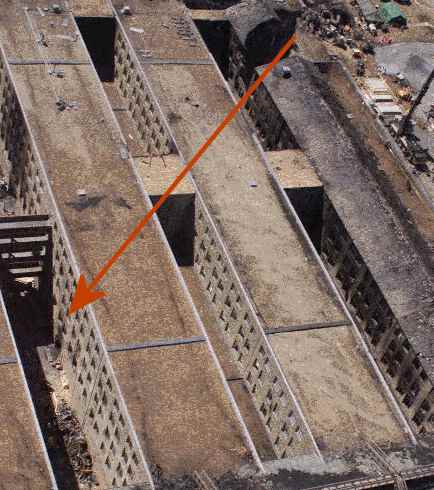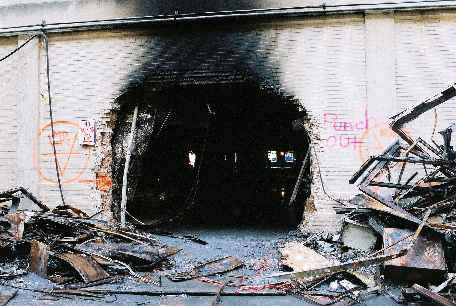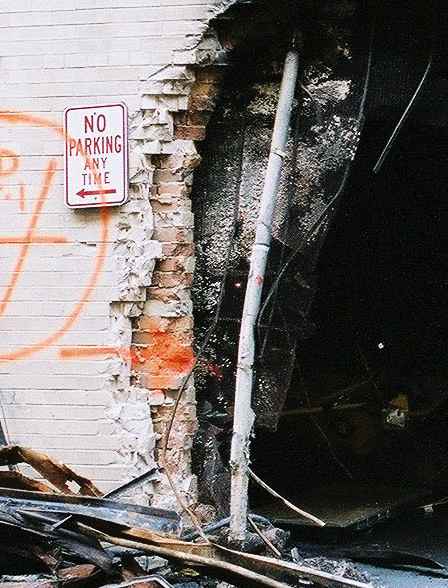|
|
| [Home] [Pentagon] [Pentagon Rings and the Exit Hole] |
|
The story... And as for the inside of the Pentagon, there's another hole, approximately six feet in diameter... ...Found on the other side of the C Ring, three rings from the impact. For that hole to have been caused by Flight 77, the Boeing would have had to smash through nine feet of steel reinforced concrete. American Airlines Flight 77, a Boeing 757, is alleged to have punched through 6 blast-resistant concrete walls‹a total of nine feet of reinforced concrete‹before exiting through this hole. Our take... ...the aircraft frame most certainly was destroyed before it had traveled a distance that approximately equaled the length of the aircraft. And here’s a comparison with another, deliberate crash (our emphasis): The influence of the structure on the deceleration of the aircraft (and,conversely, the influence of the aircraft on the structure) can be appreciated by comparisons with examples of aircraft belly-landed in controlled circumstances. In 1984, the Federal Aviation Administration (FAA) conducted a controlled impact demonstration (Department of Transportation 1987) to evaluate the burn potential of antimisting kerosene fuel. In that test, the FAA landed a Boeing 720 aircraft (weighing approximately 175,000 lb) without landing gear on a gravel runway at Edwards Air Force Base.The aircraft in that test was flying at approximately 250 ft/s when it made first contact, but it slid approximately 1,200 ft before it stopped. Although the test aircraft was traveling at approximately one-third the speed of the aircraft that struck the Pentagon, its sliding distance was approximately 3.9 times that of the Pentagon attack aircraft. Clearly, the short stopping distance for the aircraft striking the Pentagon derived from the energy dissipated through the destruction of the aircraft and building components; the acceleration of building contents; the loss of lift when the wings were severed from the aircraft; and effective frictional and impact forces on the first-floor slab, the underside of the second-floor slab, and interior columns and walls. No suggestion here that the distance travelled by Flight 77 debris was “too long”, in fact it was considerably less than the marginally lighter, much slower Boeing 720. The perimeter exterior walls of Ring E are faced in limestone and backed with unreinforced brick infilled in the concrete frame. Nearly all remaining exterior walls are 10 in. concrete.The first story at AE Drive is brick infilled in the concrete frame, with no windows.The concrete walls have 5 by 7 ft openings for windows and include columns built in as pilasters, corresponding to column locations below, and girders reinforced within the wall. Two layers of unreinforced brick? This seems to be accurate, judging from the pictures. Here’s the exit hole (click the image to be taken to the FEMA library page for this shot)... |
| [Home] [Hijackers] [Foreknowledge] [Stand down] [WTC (demolition)] [WTC (other)] [WTC7 and Silverstein] [Pentagon] [Flight 93] [bin Ladin] [Obstructing Justice] [Afghanistan] [Others] [Investigations, more] [What's New?] |


